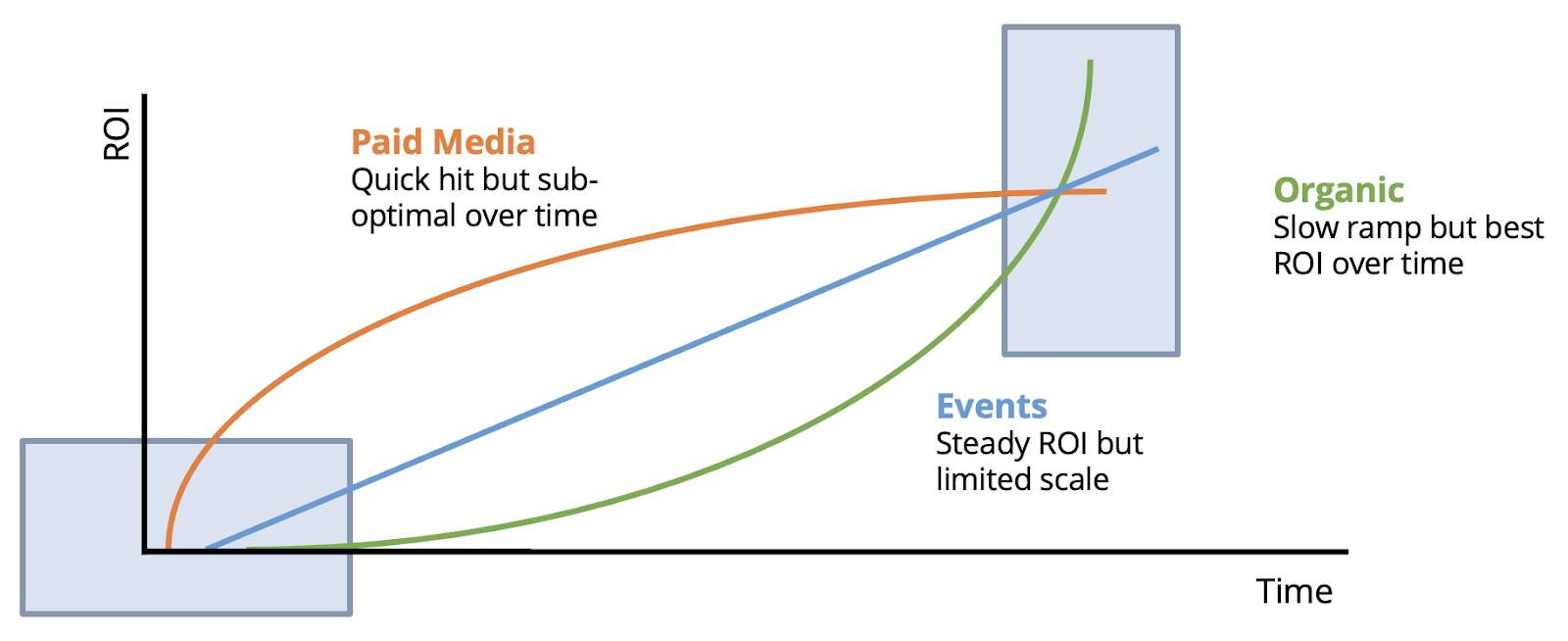It turns out that the triple threat of being locked away in quarantine, forbidden from visiting clients in person, and being under pressure to continue to deliver sales and profits, has had a seismic impact on digital transformation. The COVID-19-led paradigm shift in how customers work and buy has given rise to a significant increase in the adoption of digital marketing tools, services, platforms, and strategies.

These shifting winds have led to an increased dependency on CMOs to be the “meteorologist” of the times – helping decipher changing customer behaviors, interpret the influence of digital platforms, and lead a recovery of normalcy from the pandemic.
With this increased dependency on CMOs comes added pressure to perform: CEOs expect their CMOs to bear more responsibility and ensure growth happens faster than ever. Forget about the medium-term. Right now is what matters.
Of course, digital transformation is nothing new – for more than 20 years, digital has increasingly demanded a seat at the corporate table. However, with the recent acceleration to adopt more digital tools comes increased scrutiny by external stakeholders to ensure that data and privacy are guaranteed.
As a result, most Chief Outsiders CMOs expect digital marketing spending to increase by 11 to 25 percent in 2022. eMarketer corroborated this prediction. They forecast a 15.6 percent increase in US Digital Ad spending in 2022, following a similarly robust digital spending increase of 25.5 percent in 2021.
Where to focus digital efforts
Our proprietary research pinpoints where Chief Outsiders Fractional CMOs and their clients invest in digital in 2022 – paid search, organic SEO, video, social media, email, and content marketing all command a hefty investment by companies this year.
However, in addition to defining the media mix, it is incumbent on marketers to define product-market-fit and go-to-market strategy clearly. Only then can digital channels become part of an omnichannel approach to demand capture and generation activity.
Another note: Our findings underscore the importance of content marketing. Content is the engine that powers digital marketing – a crucial part of supporting Google’s role in sorting through the 5.6 billion daily searches performed on their platform and filtering out relevant results for your company. That has put a premium on quality (and keyword-laden) content to help us compete in the search query sweepstakes.
This focus on content means you will be hearing even more about a new concept – 10x content. The term “10x content” refers to the idea that only the best quality content will reinforce your efforts to own a particular topic or keyword. Indeed, this demands a heftier investment in professional writing resources (though some CMOs have seen improvements in content written by AI as an alternative).
Navigating the new digital landscape
So, how can you possibly know what media mix, content, and digital tools will ensure a place at the top of your market category? At Chief Outsiders, we recommend the concept of a deep-dive digital assessment to determine how a conceptual digital strategy stacks up to those of your competitors.
For example, using tools like SEMrush (a SaaS product that analyzes the effectiveness of your content for search engines, among other tasks), a digital assessment can show:
- The size of your company’s digital presence compared to competitors, relative positioning in regional or international channels, and digital growth over time.
- Insight into the content strategy of the companies analyzed, including what SEO keywords are searched for and which company captures most of the traffic. SEO keywords represent fragments of conversations happening in your market. If you can own those conversations, you will own the market.
- What campaigns companies in your market are running, and how much they are spending on those digital campaigns. Tools like SEMrush can reveal what is behind the digital curtain and highlight the different strategies used to acquire new customers.
- Which media, analysts, influencers, or technology partners influence increasing market awareness.
The above findings can form a clearer understanding of competitive strategies and demonstrate where an opportunity exists to win market share and increase sales velocity.
An omnichannel digital strategy can also be an indispensable part of an overall demand generation strategy, delivering an improved LTV: CAC ratio (a measure of a customer’s lifetime value against their acquisition cost). Generally, Middle-Of-Funnel (MOF) paid search strategies are the most expensive, whereas long-term Top-Of-Funnel (TOF) awareness campaigns built for organic search will yield the best sales velocity.

Implement an effective digital marketing strategy
While marketers are often relied upon to acquire and implement digital strategies to fortify the customer experience and go-to-market strategy, it will require CEO-level buy-in to be most effective. Many companies that do not have a top-to-bottom culture of digital adoption find themselves behind, and that even includes many tech companies. It is understandable: The options and complexity are significant, and the landscape rapidly evolves.
Angus Robertson is a Partner and CMO with Chief Outsiders, the nation’s fastest-growing fractional CMO firm.
© YFS Magazine. All Rights Reserved. Copying prohibited. All material is protected by U.S. and international copyright laws. Unauthorized reproduction or distribution of this material is prohibited. Sharing of this material under Attribution-NonCommercial-NoDerivatives 4.0 International terms, listed here, is permitted.














